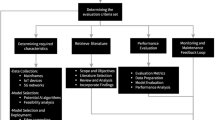Abstract
Exhaust valve is an essential part of truck engine. Dynamic and unpredictable thermal and mechanical stress cause valves to wear prematurely, leading to increased maintenance costs. In this paper, a data-driven approach is presented to predict failures of exhaust valves of truck engines. The failure datasets of exhaust valves recorded from 13 truck engines are divided into three groups: First failure, second failure, and third or more failures. The Kaplan-Meier estimator is selected to express the distribution of survival probability of the three groups of failures. In order to find the hazard indicator, two data-mining algorithms, a wrapper and a boosting tree are applied to select parameters highly relevant to the hazard rate. A Cox proportional hazard model is used to conduct regression analysis on each selected parameter. Based on the derived hazard ratio, the time-dependent baseline hazard rate is computed. Five parametric reliability models are selected to capture the baseline hazard rate for the three groups. The value-at-risk for each group of failures is computed to express the risk at different confidence levels. Life circle of truck engine exhaust valves can be estimated.
Similar content being viewed by others
References
E. L. Kaplan and P. Meier, Nonparametric-Estimation from Incomplete Observations, Journal of the American Statistical Association, 53 (282) (1958) 457–481.
D. R. Cox, Regression models and life-tables, Journal of the Royal Statistical Society, Series B-Statistical Methodology, 34 (2) (1972) 187–220.
L. H. Crow, Tracking reliability growth, Proceedings Annual Reliability and Maintainability Symposium, 1 (28) (1975) 438–443.
G. S. Mudholkar and D. K. Srivastava, Exponentiated weibull family for analyzing bathtub failure-rate data, IEEE Transactions on Reliability, 42 (2) (1993) 299–302.
R. Jiang, A new bathtub curve model with a finite support, Reliability Engineering & System Safety, 119 (2013) 44–51.
A. J. Lemonte, A new exponential-type distribution with constant, decreasing, increasing, upside-down bathtub and bathtub-shaped failure rate function, Computational Statistics & Data Analysis, 62 (2013) 149–170.
X. H. Wang, C. Yu and Y. X. Li, A new finite interval lifetime distribution model for fitting bathtub-shaped failure rate curve, Mathematical Problems in Engineering (2015).
S. E. Haupt, A. Pasini and C. Marzban, Artificial Intelligence Methods in the Environmental Sciences, Springer, New York, USA (2009) 424.
J. C. Houwelingen and H. Putter, Dynamic prediction in clinical survival analysis, Monographs on Statistics and Applied Probability, 6 (2012) 234.
P. J. Kelly and L. L. Y. Lim, Survival analysis for recurrent event data: An application to childhood infectious diseases, Statistics in Medicine, 19 (1) (2000) 13–33.
W. J. Westlake, Symmetrical confidence-intervals for bioequivalence trials, Biometrics, 32 (4) (1976) 741–744.
M. Greenwood, A Report of the Natural Duration of Cancer, H. M. Stationery. London, UK (1926).
T. Ouyang, A. Kusiak and Y. He, Modeling wind-turbine power curve: A data partitioning and mining approach, Renewable Energy, 102 (2017) 1–8.
D. R. Cox, Partial Likelihood, Biometrika, 62 (2) (1975) 269–276.
G. S. Mudholkar and K. O. Asubonteng, Data-transformation approach to lifetimes data analysis: An overview, Journal of Statistical Planning and Inference, 140 (10) (2010) 2904–2917.
P. Peduzzi, J. Concato and A. R. Feinstein, Importance of events per independent variable in proportional hazards analysis 1. background, goals, and general strategy, Journal of Clinical Epidemiology, 48 (12) (1995) 1495–1501.
D. R. Cox and D. Oakes, Analysis of survival data, Monographs on Statistics and Applied Probability, Chapman and Hall, New York, USA (1984).
D. G. Kleinbaum, Survival analysis: A self-learning text, Statistics in the Health Sciences, 12 (1996) 324.
S. J. Almalki and J. S. Yuan, A new modified weibull distribution, Reliability Engineering & System Safety, 111 (2013) 164–170.
F. K. Wang, A new model with bathtub-shaped failure rate using an additive burr XII distribution, Reliability Engineering & System Safety, 70 (3) (2000) 305–312.
T. J. Linsmeier, Value at risk, Financial Analysts Journal, 56 (2) (2000).
D. Hendricks, Evaluation of value-at-risk models using historical data, Economic Policy Review Federal Reserve Bank of New York, 27 (1) (1997) 39–67.
T. Ouyang, A. Kusiak and Y. He, Predictive model of yaw error in a wind turbine, Energy, 123 (2017) 119–130.
J. H. Kim, T. S. Kim and S. J. Moon, Development of a program for trasient behavior simulation of heavy-duty gas turbines, Journal of Mechanical Science and Technology, 30 (12) (2016) 5817–5828.
L. Borello, G. Villero and M. D. Vedova, Flap failure and aircraft controllability: Developments in asymmetry monitoring techniques, Journal of Mechanical Science and Technology, 28 (11) (2014) 4593–4603.
J. J. Han, H. W. Kim, Y. J. Kim, J. S. Kim, Y. J. Oh and H. B. Park, Failure assessment diagram analysis of high density polyethylene pipes, Journal of Mechanical Science and Technology, 28 (12) (2014) 4929–4938.
G. M. Lim, D. M. Bae and J. H. Kim, Fault diagnosis of rorating machine by thermography method on support vector machine, Journal of Mechanical Science and Technology, 28 (8) (2014) 2947–2952.
Author information
Authors and Affiliations
Corresponding author
Additional information
Recommended by Editor Chongdu Cho
Yusen He received his M.Sc. degree in Statistics from the University of Iowa, United States in 2013. He is currently persuing his Ph.D. degree in Industrial Engineering from the University of Iowa. His main research interests include application of data-mining on machinery failures and energy power systems.
Rights and permissions
About this article
Cite this article
He, Y., Kusiak, A., Ouyang, T. et al. Data-driven modeling of truck engine exhaust valve failures: A case study. J Mech Sci Technol 31, 2747–2757 (2017). https://doi.org/10.1007/s12206-017-0518-1
Received:
Revised:
Accepted:
Published:
Issue Date:
DOI: https://doi.org/10.1007/s12206-017-0518-1




